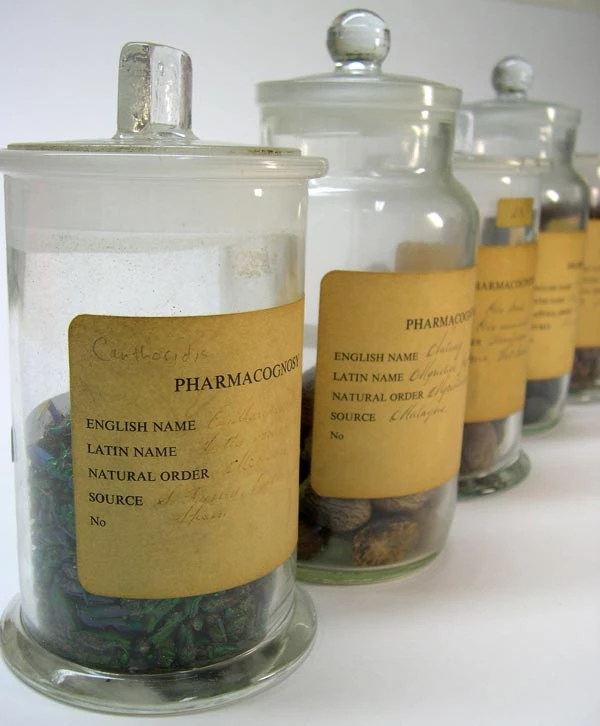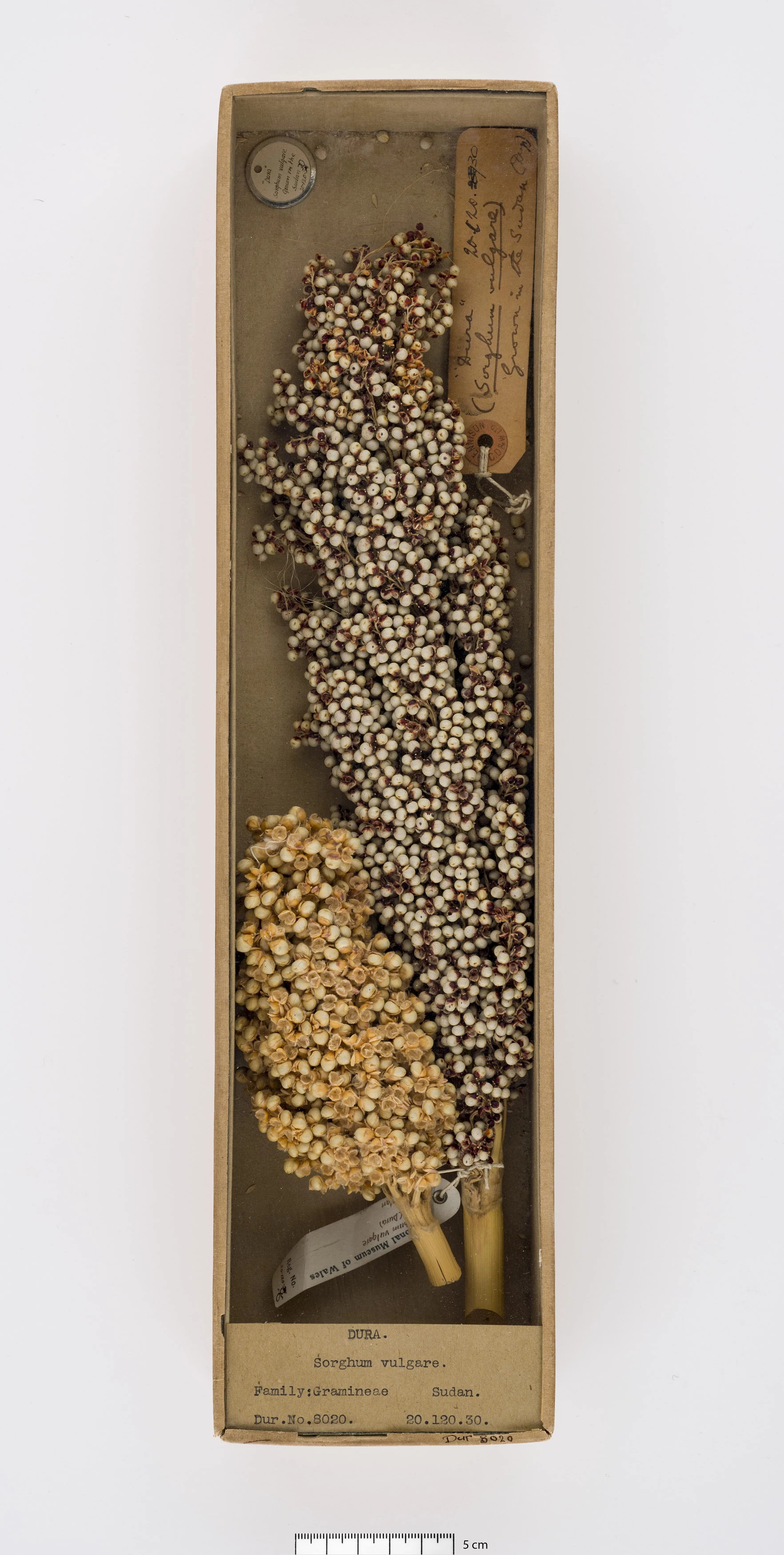The Economic Botany Collection
, 25 February 2019
Economic botany is a term that refers to a group of plants that have recognised societal benefit. The Amgueddfa Cymru - National Museum Wales economic botany collection contains over 5,500 plant-based specimens, together with 12,000 timber specimens. Categories within the collection include medicinal plants; food products; dyes and tannins; gums, resins and fibres; and seeds.
The collection is curated by the Botany Team, within the Department of Natural Sciences, National Museum Cardiff. The timber collection is stored at Amgueddfa Cymru’s Collections Centre at Nantgarw.
The ‘Plants and People’ exhibition in the Insight Gallery, National Museum Cardiff which runs until 17 March 2019, offers insight into the Amgueddfa Cymru economic botany collection.
Amgueddfa Cymru’s economic botany collection has been gradually built up since the National Museum Cardiff’s foundation in 1905. The collection includes plant material from around the world, with a significant number of specimens from India, South-east Asia and East Africa. Specimens were collected actively by Amgueddfa Cymru curators, acquired from botanical gardens and agricultural research stations and donated by individuals.
Many specimens came to the Museum in the 1920’s and 1930’s when Britain was seeking new raw materials to develop trade and industry. Since the 1970s, most acquisitions have been collected for specific exhibitions at National Museum Cardiff.
In 2007, Amgueddfa Cymru acquired a Materia Medica collection donated and catalogued by Prof. Terence Turner (Cardiff University Department of Pharmacy and Pharmaceutical Sciences). This includes nearly 500 specimens of mainly plant material historically used for medicinal purposes.
In 2017-2018 Poppy Nicol worked with Heather Pardoe to explore the economic botany collection and its relevance for helping us understand biodiversity and the importance of plants for health and well-being. You can read more about the Sharing Stories Sharing Collections Project here.
Look out for further blog posts about the economic botany collection during the People & Plants exhibition.


